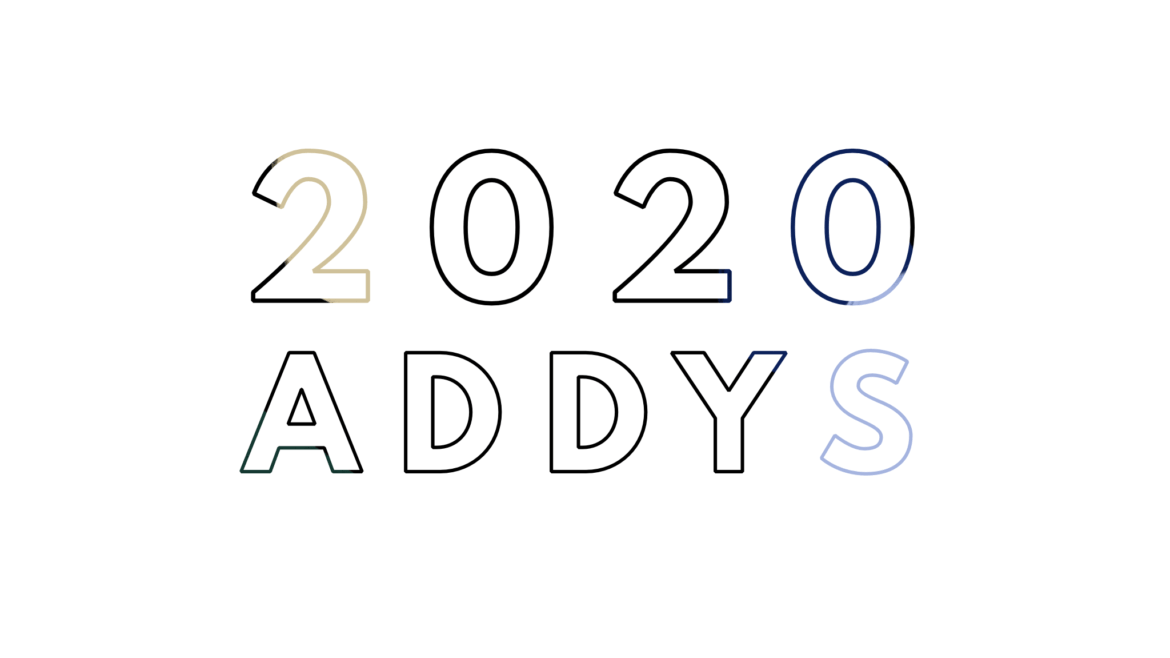By Nina Tabios
Earlier this summer, four Academy of Art University student-produced campaigns were named national winners in this year’s annual American Advertising Awards, better known as the ADDYs.
The ADDYs, one of the largest creative competitions in the industry, is a three-tier competition that requires entrants to be judged through local and regional contests in order to be recognized at the national level. Out of the 25 School of Advertising (ADV) students that won prizes from the local Greater SF Ad Club competition (including nine Gold and 14 Silver ADDY awards), students Judikaël Le Bayon, Divij Prakash, Veronica Alcocer, and Aron Ramstedt were among the 48 selected national winners recognized in the ADDYs student division.
“When our students win awards like these, it’s simply an affirmation that our approach is recognized by people currently working in the industry,” said ADV Associate Director Mark Edwards. “We’re developing the kind of talent that they look for and want. And the big thing about the awards is it puts a spotlight on the students involved and gives them additional attention in the competition for jobs. Right now, that, of course, is extremely important.”
Prakash’s project, Google Sign Assistant, took home a Gold ADDY in the App (Mobile or Web-based) category. His campaign introduces specially developed AI that can understand and translate sign language into spoken word, which falls in line with Google’s mission to make information more universally accessible.
“I had been to this restaurant in India and they had staff that [was] hard of hearing. So, that was on my mind, like how do they communicate with each other and run a restaurant,” said the recent B.F.A. art direction graduate. “I was looking at the Google Assistant as well and how they have these features that allow you to be translated and so my mind was kind of connecting the two together.”
Another winner took on a more lighthearted approach. Le Bayon, an M.A. art direction graduate, received a Gold ADDY award in the Consumer Campaign category for his Burger King “Ghosted” project. Working with fellow M.A. art direction student Mandana Karim, their idea tackles the internet dating trend that leaves plenty of millennials spooked. On Halloween, consumers are prompted to share their worst ghosting experience on Twitter, tagging both the ghoster and Burger King. The best stories win two free Whopper meals in hopes of sparking a reconnection. Or not.
“Burger King kind of always does the same things for Halloween which is something scary like either with clowns or zombies or werewolves or vampires going against McDonald’s,” Le Bayon said. “We thought the word ‘ghosted’ was a better play on words and that it was similar and relevant for our target audience.”
Finding a niche audience also worked well for Alcocer’s campaign for Vans, which won a Silver ADDY in the Single category. Developed in a TV commercial production class, which paired fellow ADV students Ramstedt, Daniel Skabek, and Diangelo Cuevas with School of Motion Pictures & Television students Kz-Jianying Li and Ziwen Ge, the Vans “Off the Wall, Always” campaign represents the skaters at heart, including the suit-wearing nine-to-fivers.
“In that class, we were prompted by teachers to find brands we were really passionate about. Honestly, I think when we looked down at our feet, we were all wearing Vans, so it was just something very relatable,” said Alcocer, a B.F.A. copywriting student. “It was a no-brainer once we had that aha moment. We realized people wear Vans just because, even if they’re going into a Financial District building. They’ll change from their dress shoes into their tennis shoes when they’re going home, it’s just such a natural feeling that you don’t even think about.”
Ramstedt, a B.F.A. copywriting graduate, had a hand in the Vans campaign but was awarded another Silver ADDY for the New York Times “Rethink” campaign he entered into the Digital Creative Technology category, created with ADV students Frans Ahlberg, Adam Kaiser, and Tina Kao. Also a winner in the Young Ones competition, held by creative nonprofit One Club for Creativity, the Rethink campaign sought to combat the spread of misinformation on Twitter.
“Today, people have a hard time distinguishing opinions from facts,” Ramstedt said. “How could we easily educate and put a tool in people’s hands and make them understand that people might be biased to what is actually opinion rather than a fact.”
Edwards praised these projects for how the students applied innovative thinking, through simple, concise messaging.
“Being able to think very carefully about the problem and get down the very basic message is extraordinarily hard to do,” Edwards said. “Saying less is often the better choice, and I think the fact that these four campaigns were recognized at the national level indicates the benefit of thinking through the issues very carefully and developing single-minded, smart solutions.”
Awards and competitions can be bright spots on résumés and portfolios, but many of the students expressed a variety of lessons learned throughout this competition process.
“Advertising doesn’t have to just be commercial,” Prakash said. “The way I see it is an extension of the brand and [its] values. If your ad or campaign [could] be something that proves that value you have behind your brand or have a positive impact that’s more valuable overall, then I think that’s a lot more effective.”
“Go through all the stages of the creative process,” Alcocer said. “It’s okay to revise it, it’s okay to go back if you need to. It can wind up becoming a completely different thing, but I think you should trust that process and stick it out.”
Karim prefaces her advice as cliché, but true, nonetheless.
“Have fun with it. You cannot just focus on winning all the time or having the best campaign, you have to have fun as well,” Karim said. “Because that’s when you really enjoy it. Especially in advertising, really, because it’s all about being creative all the time.”
